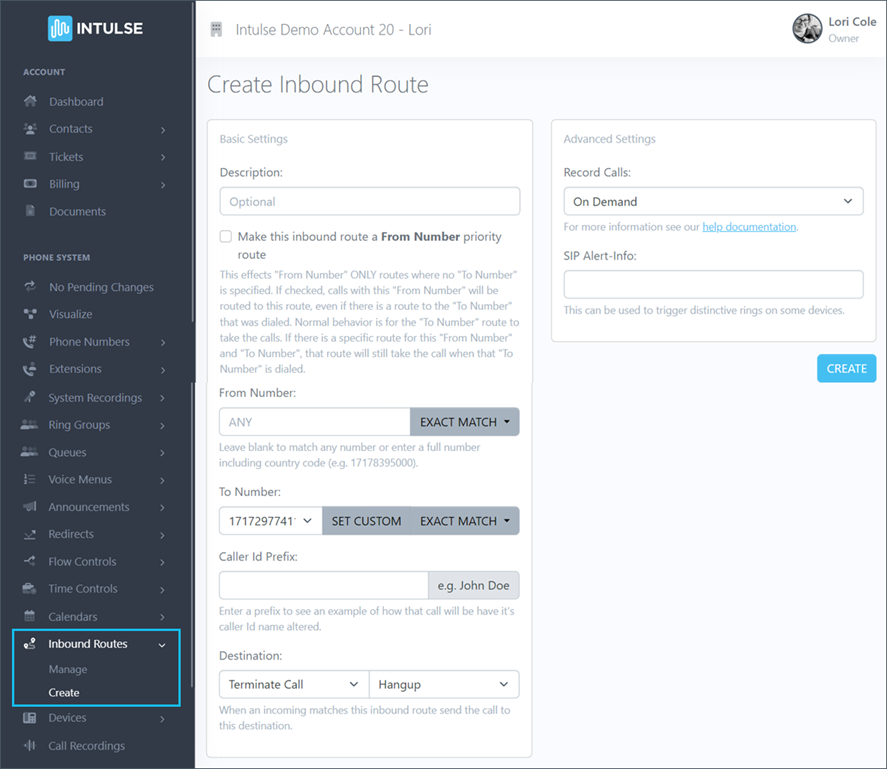An inbound route is used to tell the phone system where to route incoming calls based on the caller's phone number or the number that has been dialed. Inbound routes can be set up based on the number the call is coming FROM or the number the call is made TO. An inbound route should also be set up for ANY number calling to ANY number being called. This means that any call coming into your organization which doesn't fit one of the FROM patterns or one of the TO patterns, will follow this generic route.
Administrators have access to the inbound routes for your organization using the Account Center. Locate Inbound Routes in the Phone System menu and expand the heading. Here you will see options to both Manage and Create inbound routes.
The Create Inbound Routes page is where you can set up a new inbound route on your account.

To set up a new inbound route, follow these steps:
If your number hasn't ported yet, it will not show in the drop-down list of numbers. Instead, you will need to select Set Custom and type the number into the field.
It is also possible to create an inbound route that can match a group of numbers based on a pattern instead of matching an exact number. If you would like to create that type of inbound route, submit a ticket to our support team and they can set that up for you.
Some changes related to your phone system's behavior, such as adding or editing inbound routes, are not live immediately. Rather, the changes are "queued" and waiting to be applied. This allows you to make ALL of the necessary changes and verify that all pieces of the call flow are in place and functioning together as expected before making them live. Once you've tested your changes and are confident your system is functioning correctly, select "Apply Changes" on the left-hand menu to make your system live. A confirmation popup will open asking if you're certain you wish to apply your changes.
An inbound route is the starting point for your call flow. For example, in the call flow shown below, you see three inbound routes. Two have a direct phone number so any caller dialing those specific numbers will follow that route through the system. The third is ANY to ANY so calls coming into the system that do not match the other two numbers will follow that route.
Unlike other phone system features, inbound routes are not attached to another feature. They are the starting point.
